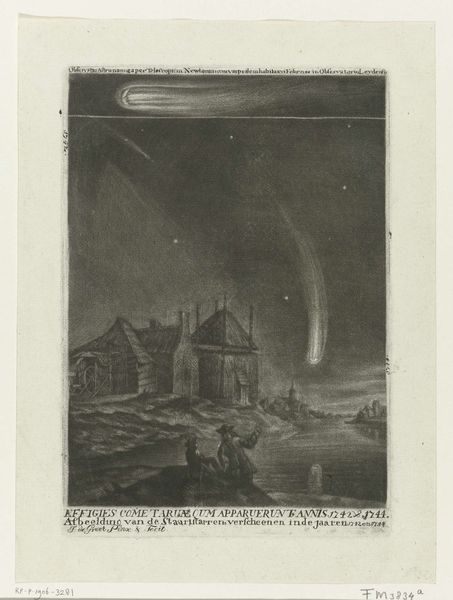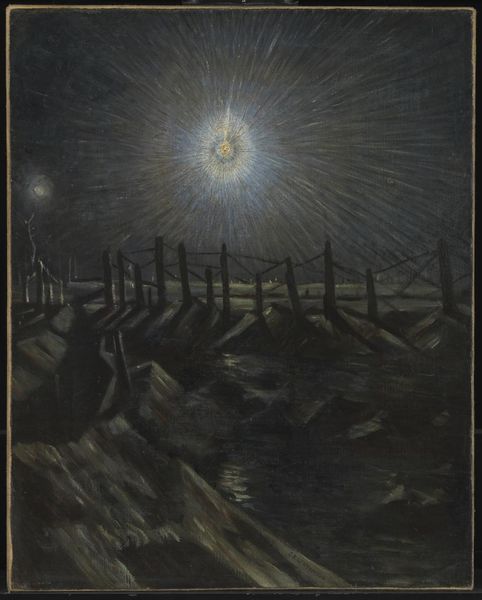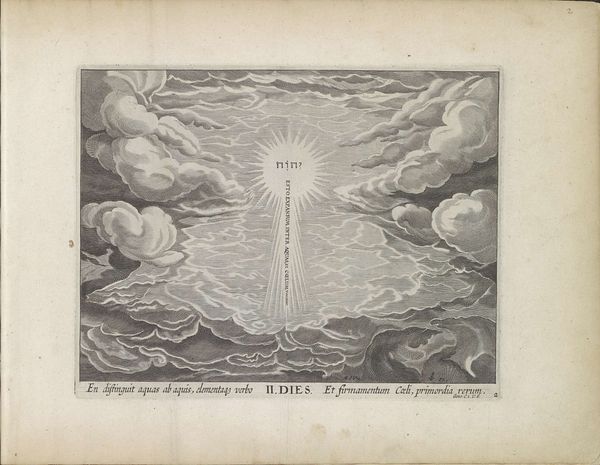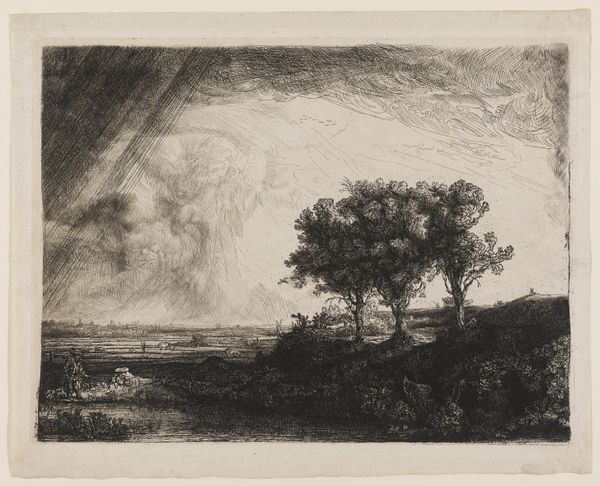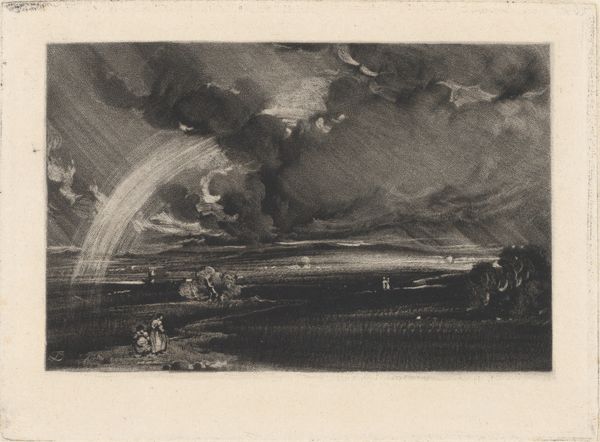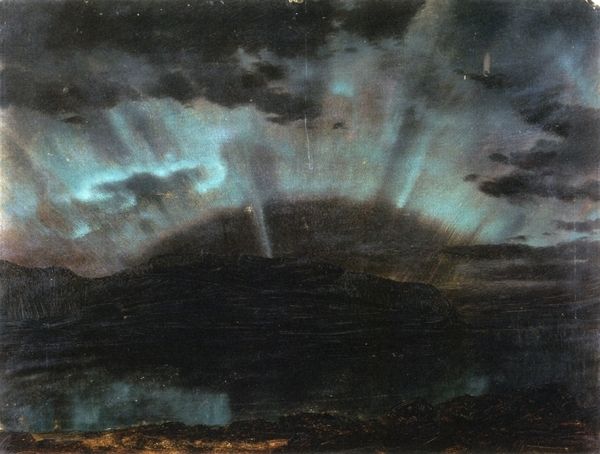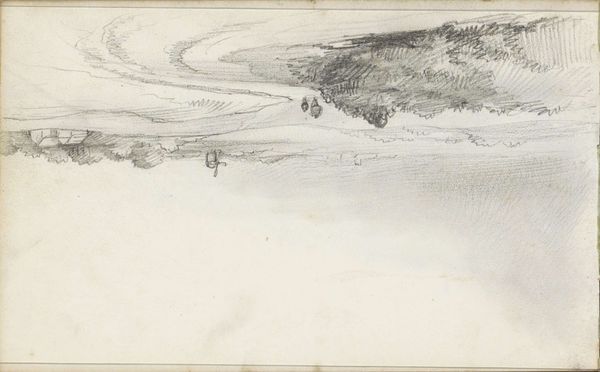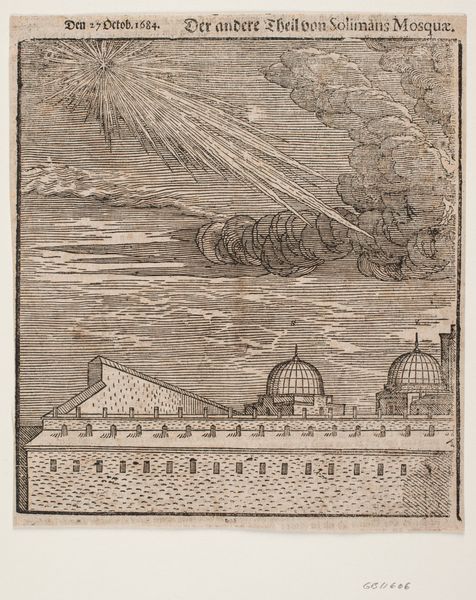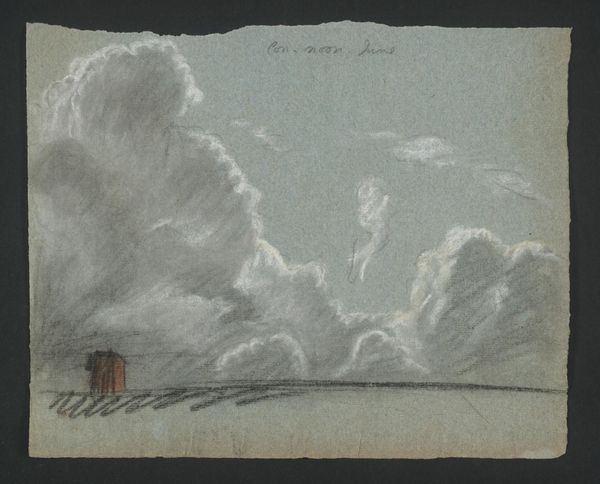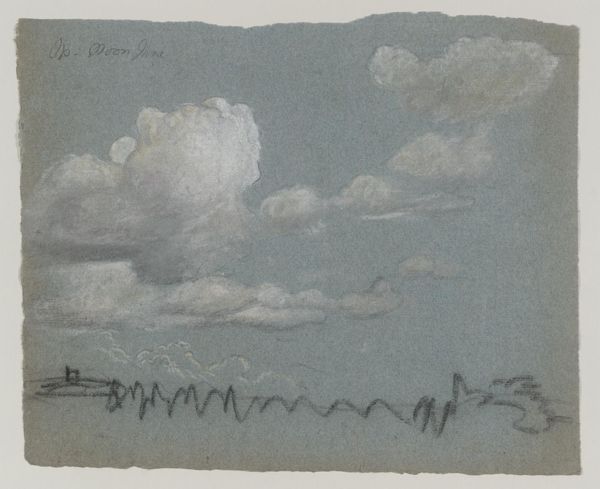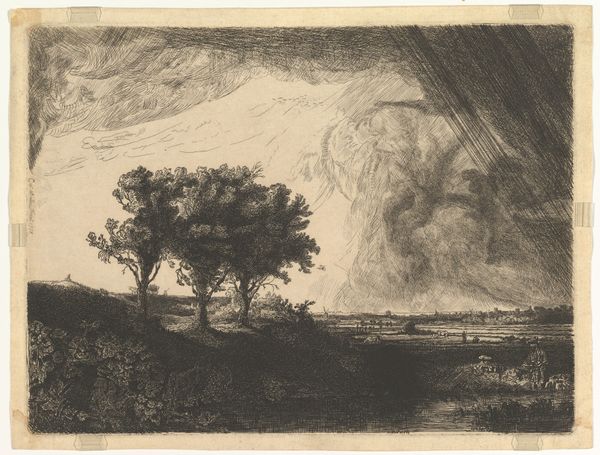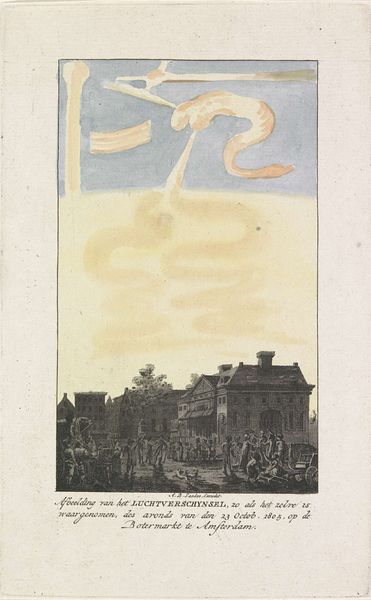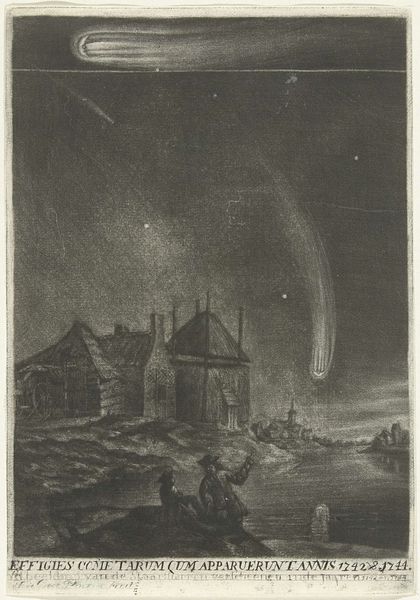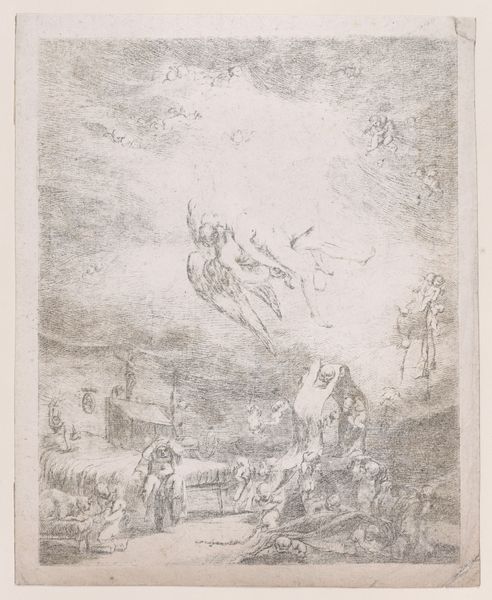
drawing, watercolor
#
drawing
#
baroque
#
landscape
#
charcoal drawing
#
watercolor
#
line
#
watercolor
Dimensions: height 315 mm, width 206 mm
Copyright: Rijks Museum: Open Domain
Rochus van Veen captured this celestial event over Beverwijk in 1680, using watercolor and ink. Dominating the scene, the comet, or 'staartster', blazes across the sky. In this period, comets were often seen as omens, celestial heralds of change or disaster. This belief isn't isolated to 17th-century Holland; it echoes through history, resurfacing in various cultures. From ancient Rome, where comets foretold the fall of emperors, to their appearance in medieval tapestries as symbols of divine wrath, this motif carries a consistent thread of foreboding. The comet, like the Fata Morgana, serves as a sign that portends major upheaval in our future. Notice how the artist contrasts the comet's drama with the serene crescent moon. This juxtaposition highlights the comet’s powerful emotional charge. The collective subconscious, steeped in centuries of celestial superstition, likely amplified the comet's impact, engaging viewers on a deep, almost primal level. The comet's tail, a beacon of change, reminds us of the cyclical nature of symbols, forever reappearing and evolving.
Comments
No comments
Be the first to comment and join the conversation on the ultimate creative platform.
